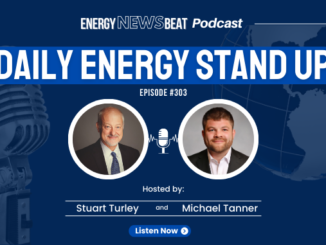
Denver, S/P Platts — Appalachia’s largest gas producer EQT is wading cautiously into the 2021 gas market, saying recently that it has already hedged approximately 80% of its annual production in a strategy to protect against downside commodity risk.
In the fourth quarter 2020, EQT continued adding to its 2021 hedge position, which has now grown roughly 60% compared with its year-ahead position in January 2020, the company said in a Jan. 5 press release.
ETQ now holds a NYMEX swaps volume of 997 MMDth at an average price of $2.69/Dth. The company is net-short NYMEX call options of 447 MMDth at $2.93/Dth and net-long NYMEX put options of 227 MMDth at $2.59/Dth. EQT holds a NYMEX fixed-price sales position of 72 MMDth at $2.50/Dth.
The company has also entered into derivative instruments to hedge its basis price risk — likely at Dominion South and other regional hubs where EQT is exposed to the daily cash market.
EQT’s cautious commodity-price outlook heading into 2021 reflects a recent and increasingly bearish trend in both US and regional forwards markets.
After peaking in late October 2020, calendar-year prices at the Henry Hub have come under increasing pressure as production gains and mild weather dampen forward market sentiment. In the US Northeast — both a hub for US gas production and a key winter heating market — the bearish market story has been much the same.
Lengthening supply
After topping $3/MMBtu in late October, the Cal-21 Henry Hub forward curve sank sharply throughout the fourth quarter as US production topped 90 Bcf/d.
In Appalachia, many producers also dialed up output in November and December as colder weather lifted gas prices. In the Marcellus and the Utica, combined output climbed toward record levels around 33 to 34 Bcf/d, up sharply from the two months prior when many producers had curtailed output in response to weaker prices during the early autumn months.
Supply growth intended to target seasonal demand faced a disappointing start to the heating season, though. In November, US residential-commercial gas demand averaged just 28.5 Bcf/d, or about 4 Bcf/d below its typical weather-normal average, according to S&P Global Platts Analytics.
In the Northeast, the start to the heating season was equally, if not more, disappointing for the gas industry, with demand from homes and businesses underperforming the average by about 18%.
Market outlook
Heading in the first quarter 2021, EQT and other US gas producers have good reason for caution.
In a revised month-ahead weather outlook published Dec. 31, the US National Weather Service said it expects most of the continental US to see above-average temperatures in January. In the Northeast and the Midwest, both critical for heating demand, the upside risk is substantial at 50% and 40%, respectively.
On the supply side, above-average storage levels and strong production appear to be continuing into the new year, potentially signaling more market risk through at least the first quarter.
In its third-quarter earnings call, EQT warned of the potential for more production curtailments in 2021, saying it sees no good reason to grow output in the current market environment.
In Q3, EQT reported a sales volume of 366 Bcfe, despite curtailing an estimated 15 Bcfe of its production. The company received an average realized price of $2.33/Mcfe during the quarter. EQT has yet to announce the date of its fourth quarter and year-end 2020 earnings conference call.






